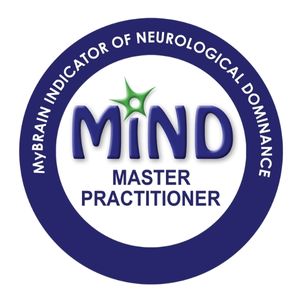Hello everybody. I’m Victoria Rennoldson, Communication and Culture Coach, and welcome to Wednesday Words with me. You can choose to watch this by clicking ‘play’ on the video above, which also has subtitles.
Or, because I know that many of you, just like me, like to listen to podcasts when you’re out and about, you can listen to the audio only version, by clicking below:
Finally, you can also read the blog as well, right here below.
In today’s Wednesday Words, I’ll be talking about communication flow and how to make it work for you and your team, to have better and more productive meetings, that build your relationships.
So, why is this a key topic?
Well, is it something you’ve ever stopped to ask yourself? Is everyone communicating at the same level? Does everybody have the same understanding of what’s happened in the meeting? Is everybody picking up some of the nuances and subtleties of what is being said, perhaps what is not being said, and gets what needs to happen next, after the meeting?
I’m sure you’ve had this experience before, where you sat through a meeting and you thought you knew what the agreed actions were, and the outcomes, only to find that people had different interpretations. And that can be about how people understand what’s going on within the meeting, it can also be about who’s communicating, and who’s leading the conversations. It can also be about how people are participating, or perhaps more importantly, NOT participating in the meeting, which can be for a number of different reasons.
I think it’s important that we explore why this is happening. Why is the communication not flowing to get us to those productive meetings? I think it starts with empathy. Clearly, we need to explore people’s perspectives and how they are experiencing the room, or virtual room. How they are finding the meeting environment. What’s working for them, and perhaps what’s not working for them.
I believe that there are some key factors that we can think about and plan for, when we want to have a great meeting, and of course this is important if we don’t want to waste time in meetings, and find ourselves frustrated by having to repeat communication and clarify messages.
So today, in Wednesday Words, I’ll be sharing some of those key factors that I think are key to bear in mind for great communication flow in meetings. So let’s start:
- First, it’s important that everybody is aware of their language. If you are in a multilingual and multicultural team, it is most likely you are using English as the common, international language. However, even though people may appear to be very fluent and operating at a very high level of language, there’ll be different levels of confidence in communication. So it helps in international teams to make sure that everybody is speaking slowly and clearly, particularly in virtual meetings. This way, messages don’t get lost, and people don’t start to lose the thread of the conversation. Along with speaking slowly, and pausing regularly to make sure people can digest the information, is also keeping your language simple. People who are communication confident may start to use more metaphorical language, idioms, or bring humour into the meeting, which of course can be very engaging, if everybody is a native speaker of English. However, in international teams this can become a bit divisive, because some people simply won’t get the idiom, the expression or why people are laughing. So be aware of that, and encourage people to speak simply and clearly, as well as slowly.
- The next factor is to think about body language. There are many different statistics about how important body language is, and clearly, on a screen – particularly on a small screen – a lot of that body language gets lost. In fact, I read a statistic recently that said only five percent of body language is interpreted in an online meeting space. That means we need to work quite hard with our body language to help emphasize our key points. So, in virtual meetings I smile quite a lot, I look directly at the camera to maintain eye contact, I also use my hands, and maybe in real life this would be a bit exaggerated, but for the online space this can be quite important to help emphasize key words and convey meaning. So think about body language and how this can help you convey key messages.
- I now want to talk about how do we make it easier for everybody to contribute in the way that feels comfortable and authentic to them. It is a fact that when it comes to online spaces that it tends to be the more confident and extrovert personalities who are happy when invited to unmute their mic and say something. And that’s great, if you’re one of those people. However, what if you’re one of the people who isn’t feeling very communication confident? The idea of just simply unmuting your mic, and saying what you think, particularly in large meeting spaces, or with particular groups of people, might be something you’re not very comfortable with. So when somebody who is leading the meeting wants to make sure there’s participation across the whole group, I do encourage them to think about different ways for people to contribute. Clearly, there are lots of options available, from very simple ones like “write what you think in the chat”, or “let’s break out into some smaller rooms”, so that people are more comfortable to speak, but you can also get creative. Use tools like whiteboards, or create a poll for virtual meetings. And there are various interactive tools like Mentimeter, where people can contribute anonymously, and their views create word clouds. So do plan this in, because not everybody is happy simply to unmute their mic, and say what they think.
- The other recommendation that can be incredibly helpful here, for those who perhaps are unsure that they’re going to get everything that’s going on in the conversation, is to record the meeting. That’s a great way for people to go back and check in that they did understand the key messages. There are options for closed captioning, this means putting subtitles on the virtual call, so subtitles are spontaneously created. I believe most of the platforms generate them in English, although there are some apps that you can add on, where you can get them simultaneously translated into other languages, and that’s a fantastic way to make sure communication is clear and everybody’s getting the same message. If that’s not possible, keep it simple and have a notetaker. Now, that may sound a bit old school, but it can be useful to allocate a notetaker before the meeting, and make sure that person captures key outcomes, agreed actions, and next steps. And if that is captured in a written format and then circulated within 24 to 48 hours after meeting, then that is a brilliant way to make sure the team has a common understanding, the communication is consistent across the team and there are no misunderstandings.
- And finally, how to end the meeting well and allow participation and communication flow right to the end. I believe there is a moment we can add, right at the end of the meeting, where we ask, “What else?” or “Does anybody have anything else to add?” I know that sounds very simple, but it’s about making sure that you pause, and allow, just for the final moments, for individuals to add a final point of view. This might be the moment when the person who hasn’t been participating or saying very much, feels confident enough to add their opinion. If time allows, you could also potentially give 24 hours after the meeting for people to email in any extra or final thoughts they’ve had. For those people who are less communication confident, this might be an important way for them to add their final views.
So there you go, my thoughts on the key factors to allow the communication flow across the team, particularly in multicultural, multilingual teams, and when you’re aiming for productive meetings.




